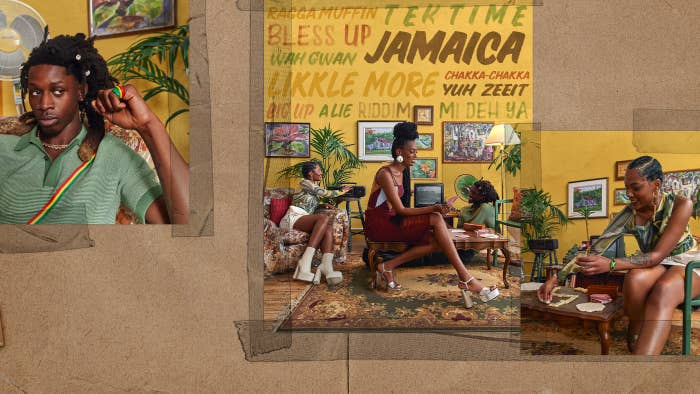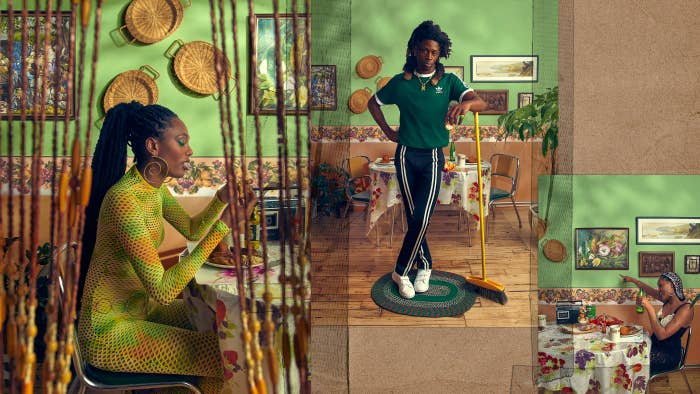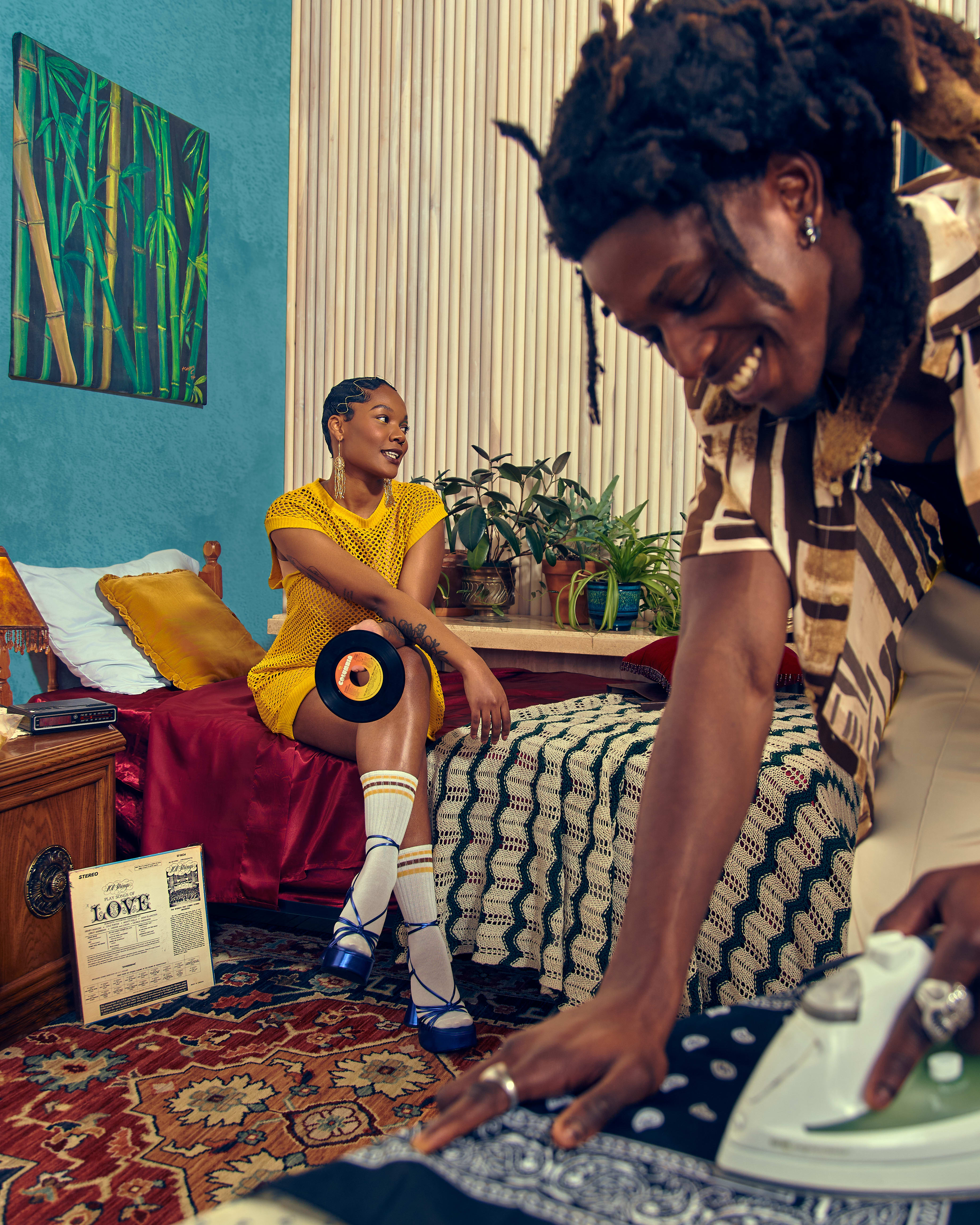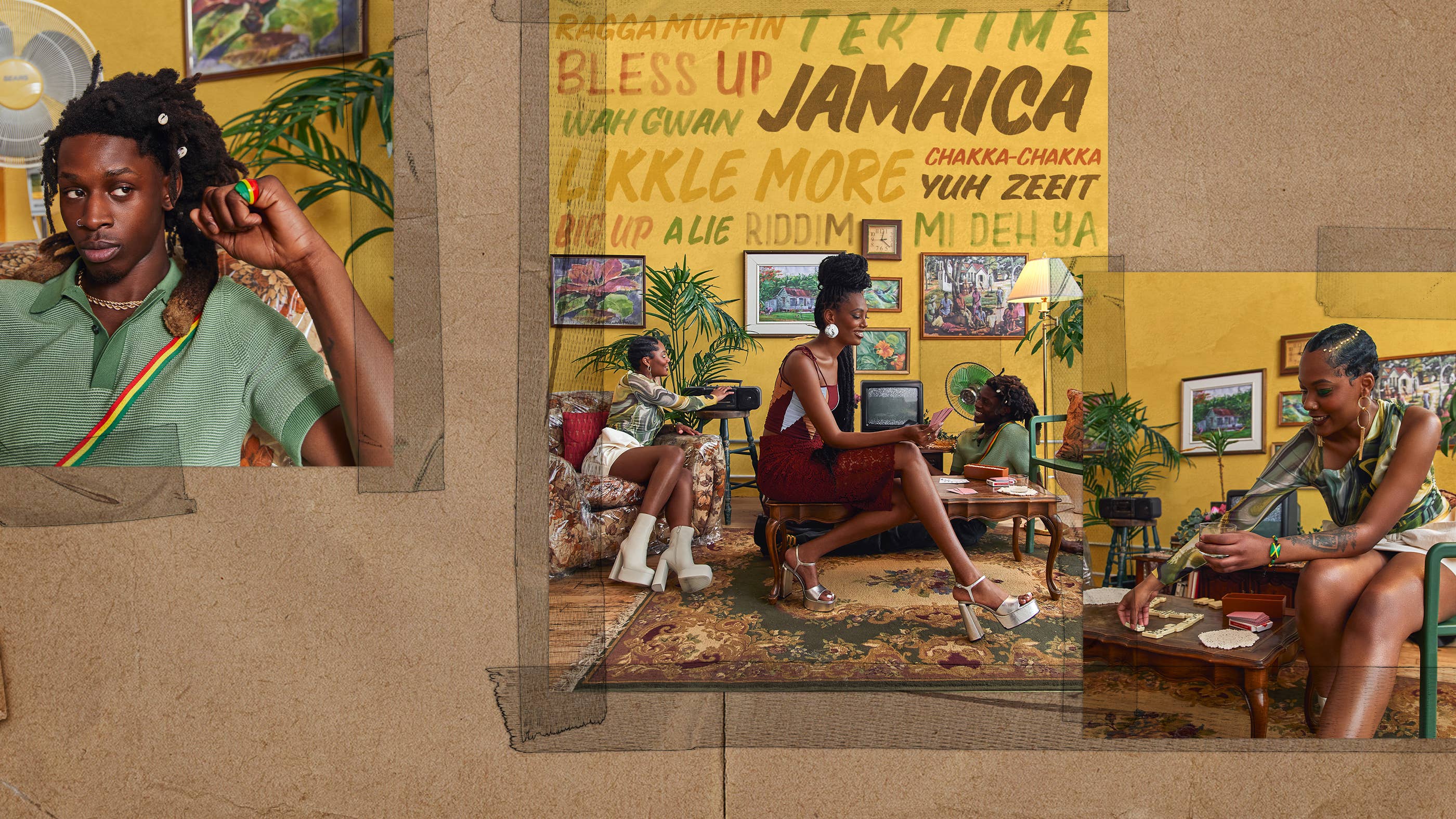
Visual culture is an important element of how communities are remembered, and for O’shane Howard, it’s part of how we can make connections between diaspora and heritage. The photographer and director’s newest project YAAD is a nod to the culture around music, style and gestures that people of the diaspora engage with and retain in their new geographies.
Having worked with brands like adidas, Appleton Estate, Nike, Ikea, and more, he wanted to create a passion project that was highly stylized in its approach to prove that Jamaican, and by extension Caribbean culture and narratives, can be captured in engaging ways.
YAAD is a four-part series—Kitchen, Bedroom, Living Room, and Jamaican Flag—that invites viewers into each space. Howard shares that for each, he aimed to make it feel like home. “The kitchen is a place where you have conversation, you have food, you bring together community, peers and friends. The kitchen is the most used space in the home so for me it’s making sure it felt and looked like that,” he shares.

The Living Room drew on the design aesthetic of Jamaican interiors but placed within the diaspora. He shares, “My goal for the living room scene was to basically highlight things that felt familiar to the culture and felt familiar to Jamaican heritage. When I think about a living room, I think about friends and family just having a good time. I chose certain words to be highlighted on the wall that I hear on a daily basis. Having those words on the wall is just a representation of the words that are being used in the living room amongst your friends.”
Jamaican Flag comes out tomorrow, so Complex Canada spoke with Howard about exploring identity through photography and what it means to produce culturally-sensitive work.
What compelled you to engage in this exploration of Jamaican diasporic identity?
I always felt that there wasn’t enough documentation of the Jamaican diaspora. There is a lot of documentation of the heritage and the history of Jamaica, but when I go online or when I’m looking at other cultures and seeing what’s being created, I felt like there wasn’t enough imagery that highlighted the diaspora the way that I’d want to see it. I believe that everyone has their own perspective on how they highlight Jamaica, but I know there are numerous talented photographers that have Jamaican heritage or that were born in Jamaica, I just want to see more of that being highlighted.
Coming from a commercial background, naturally, I’m more keen to give it that commercial look, opposed to something more raw or unedited. I wanted to really see a high-level POV of what that would look like at a commercial level, just highlighting things that I grew up seeing as a child, and even as an adult. I’m still learning certain things from my grandmother when she came down here years ago. It’s super important that we really use the power of our lens to shape the world that we want to see but most importantly, highlight key components of our heritage that other people can enjoy as well.

How do you see Jamaica typically being documented that you wanted to challenge or reframe with YAAD?
I know everyone’s seen it at this point, but I shot YAAD before the Levi’s commercial came out, and seeing that commercial really made me happy. Someone in the marketing team or whatever department definitely has to be from Jamaica. They’re tapped in, everything from beginning to end was super clean and vibrant. Everything about that entire ad was as well put together, and that’s not to say that when Jamaican content is being executed it’s not well put together, but there’s just a particular way it needs to be done when you’re doing commercial work.
That’s the type of approach that I use when approaching YAAD. Just being aware that I come from an advertising background, showing that type of work to an art director, creative director shows how you can highlight and showcase different components of Jamaican culture.
I guess you want to showcase that there’s like a breadth of ways you can capture Jamaican people and the diaspora. How has the diaspora been captured, or maybe not captured at all, that compelled you to ensure that that element was included for this shoot?
My father lives in Jamaica and he was a part of the post-production process. Thinking about the times I’ve gone to Jamaica helped shape how I approached things: the colors—there’s a lot of green walls, yellow walls, blue walls, there’s a lot of patterns, but a particular pattern, not any type of pattern. There’s a certain way that Jamaica really approaches their interior designs, there’s a way they place furniture within the room. I don’t think you can approach it that way, unless you’ve been there or unless you really study it. You have to go there and be in Jamaica, be immersed in the space with the people, with family to really understand why things are done, the way they’re done, where they came from and why they’re upheld today. My father was a big part of those considerations when approaching this project. That’s something I really cherished: to bring him, my mother, and my cousin as part of the process as well. Everyone does have their own POV of Jamaica, the diaspora and the way it’s portrayed, but I think there are certain elements that we do all align on that you just can’t revamp.

When we migrate and we learn our cultures in a way, we have the agency to choose which things we’re going to carry with us and which things we’re going to leave behind. Even as you speak towards the ethos of Jamaican interior design and making that a key component of the language of YAAD, how does nostalgia look or take up itself within this project?
The kitchen shot with Aliisa: you see the beaded drapes, you see her holding her fried dumpling, you got the rice and peas and plantain, you got the Grace drink and the jerk chicken. To me, that is so nostalgic. My aunt, for numerous years, lived in an apartment and, for as long as I can remember, she always had those same beads. That was something that I really wanted to have in the shoot because it brought a sense of home and familiarity. I also feel like a lot of people from the Caribbean can relate to that as well. I wanted to weave in things from my upbringing: the paintings on the wall with the black families and greenery, the radio on the table. Having my grandmother with me all my life, I know there’s a certain pattern that your Jamaican grandmother is going to pick. These were the conversations that I had. I wanted to ensure I was doing the entire piece justice.

For one of the upcoming rollouts, we have Bill with the broomstick. My uncle, whenever he sweeps, he sounds like he’s having a war with the rug. We also have Bill holding the water cracker. That to me is very nostalgic because I love my porridge with water crackers. This project was for me but also for Jamaican people to relate and embrace.
Even the shot with Syreta having her hand pointed at the wall, holding the bottle of Ting. That’s a very particular gesture: you hear your tune and you’re excited that your tune is on. Having the Milo on the table, the cheese, the bun are all intentional. lt would have been obvious for me to have a Jamaican patty, as a part of this and even though that’s essential, there’s other things that we like and that we enjoy outside of that.
To check out the rest of YAAD, check out O’shane’s website.

